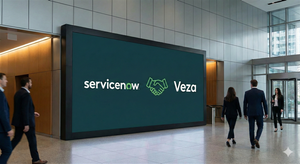Seize the Opportunity: Lyft’s Ad Sales Surge Points to Rebound

Rideshare operator Lyft Inc. (NASDAQ: LYFT) finally made good on its path to profitability, scoring its first-ever GAAP profitable quarter. Unfortunately, the good news was overshadowed by its soft forward guidance, which sent shares tumbling 17% following its second-quarter 2024 earnings release.
However, the market knows when it sees a bargain, and buyers sweep in quickly, driving shares back to where they were trading before the announcement. Lyft CEO David Risher proved he's a believer in action by scooping up more than a half-million dollars of common stock in the open market at around $9.67 per share.
Lyft operates in the computer and technology sector and shares a rideshare duopoly with Uber Technologies Inc. (NYSE: UBER). While not a direct competitor, Grab Inc. (NASDAQ: GRAB) operates a rideshare network throughout Southeast Asia.
Second-Quarter Results Were Impressive
Lyft's second-quarter results were impressive. It recorded 24 cents earnings per share (EPS), beating consensus analyst estimates for 16 cents by 8 cents or 50% higher. Lyft earned a GAAP profit of a penny, a big improvement over a GAAP loss of 30 cents in the year-ago period. Revenues swelled 41% YoY to $1.44 billion, also beating consensus estimates of $1.39 billion. Adjusted EBITDA more than doubled to $103 million, up from $41 million in the year-ago period.
Growth Metrics Were Also Impressive
Gross bookings rose 17% YoY to $4 billion. Active riders rose 10% YoY. Total ride volume rose 15% YoY. Despite the cost of revenue rising 15% YoY, Lyft posted a net income of $5 million, improving from a loss of $114.3 million in the year-ago period. Free cash flow improved to $256.4 million compared to a negative $112.2 million in the year-ago period. Canada rides doubled as it became Lyft's 8th largest market.
Advertising Is a Growth Engine
Lyft Media saw revenue rise 70% YoY. Brands are finding their in-app video ads effective as their revenues grew 10X YoY. The company added 44 new brands including T-Mobile USA (NASDAQ: TMUS) and Microsoft Co. (NASDAQ: MSFT)-owned Activision. It also re-signed major brands Amazon.com Inc. (NASDAQ: AMZN), Fidelity, and Comcast Co. (NASDAQ: CMCSA)-owned NBCUniversal.
Lyft experienced a strong bump in rides during Pride month. Lyft experienced a 17% boost in rides in cities with Pride celebrations. San Francisco, Seattle, and Denver saw a 50% jump in rides. While the bump up was strong for its second-quarter results, normalization is expected moving forward with its third quarter.
Guidance was Softer Than Expected
The good news was short-lived when LYFT laid out its guidance. For the third quarter of 2024, Lyft expects gross bookings to remain relatively unchanged at $4 billion to $4.1 billion and adjusted EBITDA of $90 million to $95 million, which drops sequentially from Q2 adjusted EBITDA of $103 million. Adjusted EBITDA margin is expected to fall to 2.3% from its current 2.6%.
Full-year 2024 ride growth is expected in the mid-teens YoY, with gross bookings rising slightly faster than ride growth. Adjusted EBITDA margin is expected to rise to 2.1%, up from 1.6% in 2023.
Lyft shares continue to trade down 22% for 2024. As for cash flow, the company expects to continue generating positive free cash flow for the full year.
CEO Comments and Actions
Lyft's new CEO, David Risher, has been effective since taking the helm on April 17, 2024. His motto, "Customer obsession drives profitable growth," has helped grow record drivers and riders on its platform. Under his leadership, metrics have improved across the board, including ridership-hitting records. Risher doesn't see any impact on the economy.
Lowering surge pricing by 25% has helped fuel ridership. Markets with the sharpest declines in surge or Primetime were Baltimore, Phoenix, and Orlando, which also saw the highest conversion rates. Risher stated they would continue the trend and "...open up a can of wombats on Primetime."
On August 13, 2024, it was reported that CEO Risher purchased 51,815 shares of common stock at around $9.67 per share for around $501,000. Clearly, Risher saw a bargain and jumped on the opportunity.
The Huge Opportunity in Autonomous Vehicles
CEO Risher is also a proponent of autonomous vehicles (AV). Lyft has already facilitated 130,000 AV rides in Las Vegas. Lyft’s platform provides access to 40 million riders every year in the United States and Canada. Risher commented, “ We believe that the best way for autonomous vehicles to commercialize at real scale and the best way to monetize this technology is through networks where the vehicles can be put to use. Lyft has that network today.”
LYFT Stock Attempts an Ascending Triangle Breakout After Filling the Gap
A gap fill is equivalent to filling a hole in the sidewalk with cement. When LYFT stock fell 15% on its earnings release, it formed a price gap down from $10.57 to $9.80 as it continued to sink to a low of $8.93. LYFT needed to rise back up through $10.57 to fill the proverbial hole in the cement. Rising through the previous gap at $10.94 solidified the gap fill.

LYFT rallied back up to the $11.90 Fibonacci (fib) resistance level, which is also the flat-top upper trendline resistance. The higher lows are connected by the ascending lower trendline powered by the rising relative strength index (RSI) at the 52-band. Fib pullback support levels are at $10.94, $9.63, $8.83 and $7.91.
Lyft stock’s average consensus price target is $15.87 and its highest analyst price target sits at $24.00.
Actionable Options Strategies
Since fundamentals are improving, investors can consider using cash-secured puts to take positions on pullbacks at the fib support levels. A wheel strategy can be implemented to generate income upon being assigned shares.
More News
View More




Recent Quotes
View More
Quotes delayed at least 20 minutes.
By accessing this page, you agree to the Privacy Policy and Terms Of Service.